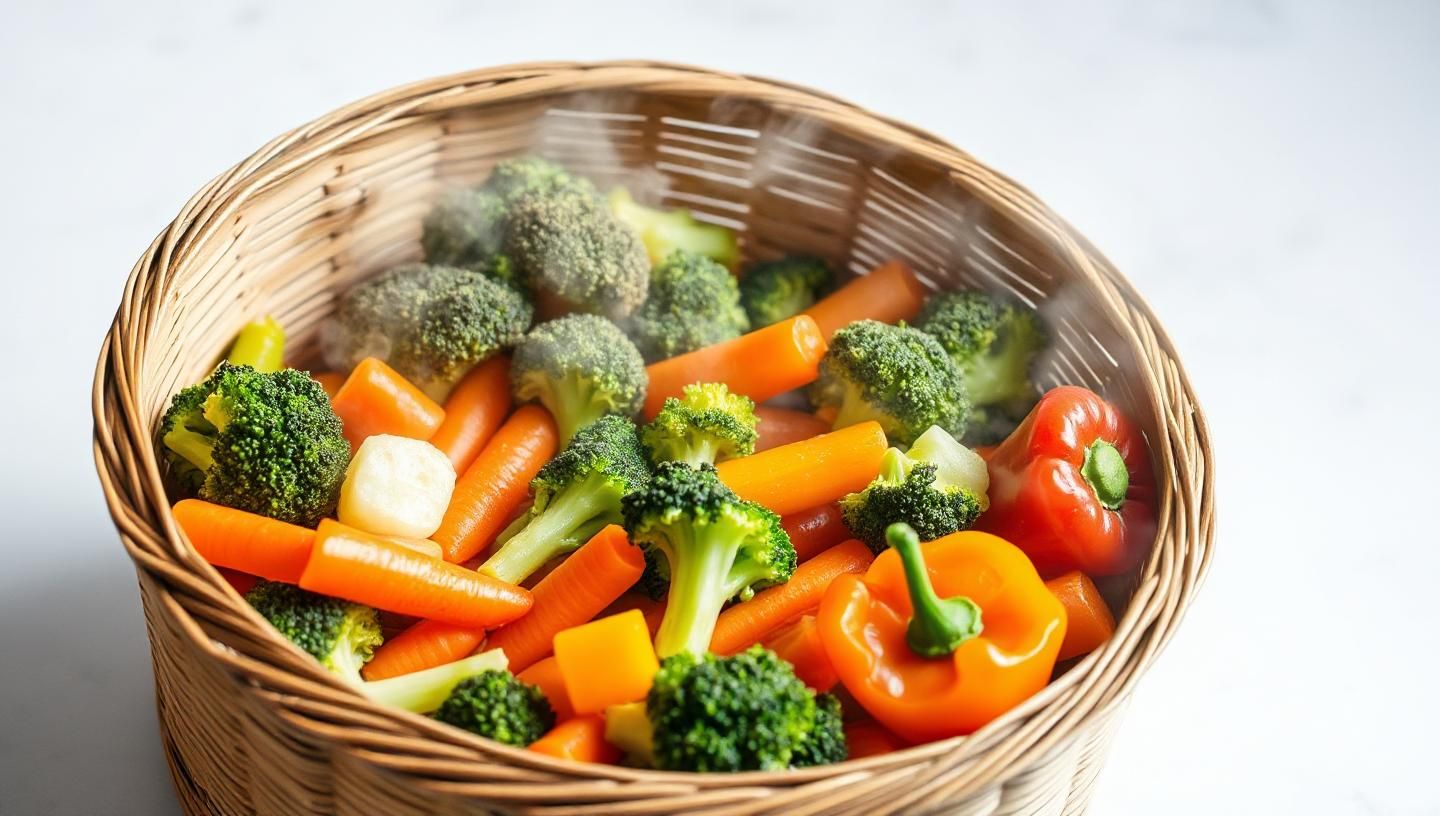Physical Address
304 North Cardinal St.
Dorchester Center, MA 02124
Physical Address
304 North Cardinal St.
Dorchester Center, MA 02124

steam food: Discover the art of steaming food with our comprehensive guide. Learn the benefits, techniques, and recipes to make healthy, flavorful meals easily at home.
How To Steam Food
Hey there, food enthusiasts! I’ve been obsessed with steam food for years and learned a ton along the way. There’s something magical about how steaming preserves the natural flavors and nutrients of food, making it not just a healthy choice but a delicious one too. Whether you’re a beginner or a seasoned cook, I’m here to guide you through the art of steaming food, sharing my personal experiences and expert tips to make your culinary journey both fun and rewarding. So, let’s dive into the steamy world of cooking!
Why Steam Food?
When I first tried steaming, I was surprised by how simple yet effective it was. Steaming is one of the healthiest steam food techniques out there. It retains more vitamins and minerals compared to boiling or frying, which can leach nutrients out of the food. Plus, it’s a low-fat cooking method, perfect for those looking to maintain or lose weight. I’ve studied this topic for years and found that the benefits of steam cooking extend beyond health; it’s also energy-efficient and can be quicker than you might think.
Getting Started with Steam Cooking
Starting with steam cooking can be as simple or as sophisticated as you want it to be. I began with a basic bamboo steamer over a pot of boiling water, which is a traditional steam cooking method. If you’re looking for something more modern, electric steam cookers are fantastic. They control the temperature and time, making the process foolproof. Here’s why this works, based on what I’ve learned: these appliances ensure even cooking and prevent overcooking, which is crucial for delicate foods like fish or vegetables.
Steam Cooking Techniques for Vegetables
Vegetables are where I really saw the magic of steam food shine. They come out vibrant, crisp, and full of flavor. Here’s a technique I’ve perfected: cut your vegetables into uniform sizes to ensure even cooking. For example, when I steam broccoli, I cut it into florets and steam for about 5-7 minutes. This keeps them bright green and tender-crisp. Remember, the key is not to overcrowd the steamer; steam needs space to circulate.
Steam Cooking for Fish and Seafood
Fish and seafood are natural stars in the world of steam cooking. I’ve tested this approach myself and noticed that steaming fish like salmon or cod keeps it moist and flaky, preserving its delicate texture. A simple seasoning of lemon, dill, and a touch of salt before steaming for about 10-12 minutes can elevate your meal. For shellfish like mussels or clams, steaming opens them up beautifully, infusing them with whatever aromatics you choose, like garlic and white wine.
Steam Cooking for Rice and Grains
Steaming rice and grains might sound unusual, but it’s a game-changer. I adapted this from a classic method where I use a steamer basket over boiling water. This method keeps the grains separate and fluffy, unlike boiling which can make them mushy. For example, when I steam quinoa, I rinse it first, then steam it for about 15-20 minutes. It’s perfect for salads or as a side dish, retaining its nutritional benefits.
Modern Steam Cookers and Their Advantages
As a writer passionate about culinary arts, I’ve explored steam cooking deeply. Modern steam cookers, like combination steam ovens, offer precision that traditional methods can’t match. They allow for multi-level cooking, so you can steam different foods at once without flavor crossover. This is particularly useful for preparing a full meal. I’ve found that these appliances are not just for home kitchens; they’re becoming popular in restaurants for their consistency and efficiency.
Safety Tips for Steam Cooking
Safety first, always! Here’s a mistake to avoid: never open the lid of your steamer directly towards you; the steam can cause burns. I’ve learned this the hard way. Also, ensure your steamer is stable on the stove, and if you’re using an electric model, keep it away from water splashes. Always use oven mitts when handling hot steamers, and let the food rest a bit before opening to avoid a steam explosion.
Conclusion
Steaming food has transformed my cooking, and I hope it does the same for you. From the health benefits of steam cooking to the ease of modern appliances, steam food offers a versatile, nutritious, and delicious way to prepare meals. I’ve shared what works for me—hope it helps you too. Whether you’re steaming for a quick meal prep or a gourmet dinner, remember, the steam is your friend in the kitchen, preserving the essence of your ingredients while keeping things simple and healthy. Happy steaming!